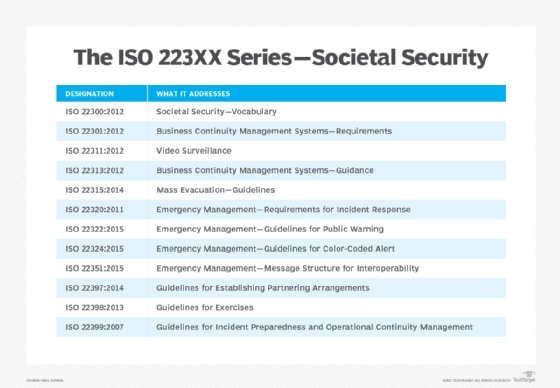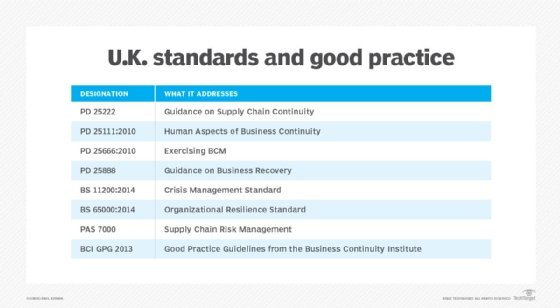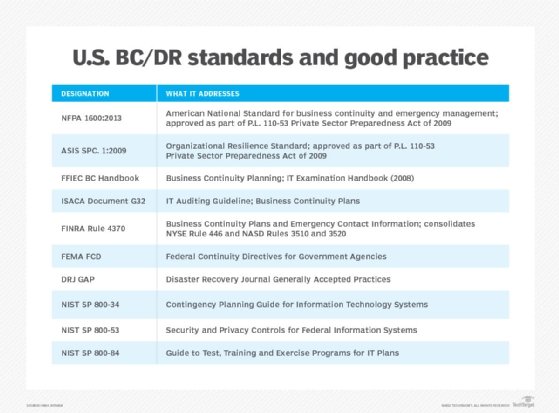How Financial Organisations Can Maintain Business Continuity in the Face of Challenges
Business organisation continuity is an organization'due south ability to maintain essential functions during and after a disaster has occurred. Business continuity planning establishes risk management processes and procedures that aim to prevent interruptions to mission-critical services, and reestablish full office to the organization as quickly and smoothly every bit possible.
The nigh basic business continuity requirement is to keep essential functions up and running during a disaster and to recover with as little downtime as possible. A business concern continuity plan considers various unpredictable events, such as natural disasters, fires, disease outbreaks, cyberattacks and other external threats.
Business continuity is important for organizations of any size, only it might non be applied for whatever but the largest enterprises to maintain all functions for the elapsing of a disaster. Co-ordinate to many experts, the first footstep in business continuity planning is deciding what functions are essential and allocating the available budget accordingly. Once crucial components accept been identified, administrators can put failover mechanisms in place.
Technologies such as disk mirroring enable an organization to maintain up-to-date copies of data in geographically dispersed locations, not just in the principal data middle. This enables data access to continue uninterrupted if one location is disabled and protects against data loss.
Why is concern continuity important?
At a time when downtime is unacceptable, business continuity is critical. Downtime comes from a variety of sources. Some threats, such every bit cyberattacks and farthermost weather, seem to be getting worse. Information technology'southward important to have a business continuity programme in place that considers any potential disruptions to operations.
The plan should enable the arrangement to keep running at to the lowest degree at a minimal level during a crisis. Business concern continuity helps the organization maintain resiliency, in responding speedily to an interruption. Strong business organisation continuity saves money, fourth dimension and company reputation. An extended outage risks financial, personal and reputational loss.
Business continuity requires an organization to take a await at itself, analyze potential areas of weakness and assemble key information -- such as contact lists and technical diagrams of systems -- that tin can be useful outside of disaster situations. In undertaking the business concern continuity planning process, an organization can improve its communication, technology and resilience.
Business concern continuity might fifty-fifty be a requirement for legal or compliance reasons. Especially in an era of increased regulation, it's of import to understand which regulations affect a given organization.
What does business continuity include?
Business continuity is a proactive fashion to ensure mission-critical operations proceed during a disruption. A comprehensive program includes contact information, steps for what to do when faced with a diversity of incidents and a guide for when to apply the document.
Business continuity features clear guidelines for what an system must do to maintain operations. If the time comes for response, there should be no question well-nigh how to move forward with business processes. The company, customers and employees are all potentially at stake.
Proper concern continuity includes different levels of response. Not everything is mission-critical, and then it's of import to lay out what is well-nigh vital to go on running, and what could stand to come back online at later times. It's crucial to exist honest about recovery time objectives and recovery point objectives.
The procedure includes the whole organisation, from executive management on downwardly. Although IT might drive the business organization continuity, it'southward essential to get buy-in from management and communicate key information to the entire organization. 1 other important area of collaboration is with the security team -- although the ii groups ofttimes work separately, an organization can gain a lot by sharing data across these departments. At the very least, everyone should know the basic steps for how the system plans to respond.
Iii key components of a business continuity programme
A business continuity programme has 3 central elements: Resilience, recovery and contingency.
An organisation can increase resilience past designing critical functions and infrastructures with various disaster possibilities in mind; this can include staffing rotations, data redundancy and maintaining a surplus of capacity. Ensuring resiliency against different scenarios can besides help organizations maintain essential services on location and off site without intermission.
Rapid recovery to restore business functions afterward a disaster is crucial. Setting recovery time objectives for different systems, networks or applications can help prioritize which elements must exist recovered first. Other recovery strategies include resource inventories, agreements with third parties to take on visitor activity and using converted spaces for mission-critical functions.
A contingency plan has procedures in place for a variety of external scenarios and can include a chain of command that distributes responsibilities inside the organisation. These responsibilities can include hardware replacement, leasing emergency office spaces, harm cess and contracting third-party vendors for assistance.
Business continuity standards
Table 1 lists the standards in the ISO 223XX Series that apply to business continuity and related activities. The ISO 22398 and 22399 standards are also worth a await.

Table 2 lists the Business Continuity Institute'due south Good Practice Guidelines. The guidelines provide a comprehensive foundation for understanding the business continuity process, and they map closely to the ISO 22301 standard.

Tabular array 3 provides a partial list of standards, regulations and good practices developed in the U.S. by several different organizations such as ASIS International, the National Burn down Protection Association, the Federal Financial Institutions Exam Council, the Information Systems Audit and Control Association, the Financial Industry Regulatory Authority, the Federal Emergency Management Agency and the National Institute for Standards and Technology.

Business organisation continuity vs. disaster recovery
Like a business organisation continuity program, disaster recovery planning specifies an organization'due south planned strategies for post-failure procedures. However, a disaster recovery program is simply a subset of business continuity planning.
Disaster recovery plans are mainly information focused, concentrating on storing information in a way that tin can be more than easily accessed following a disaster. Concern continuity takes this into account, but also focuses on the risk management, oversight and planning an organization needs to stay operational during a disruption.

Business continuity development
Concern continuity starts with initiating the planning project. Business concern bear upon analysis (BIA) and risk assessment are essential steps in gathering information for the plan.
Conducting a BIA can reveal whatever possible weaknesses, also every bit the consequences of a disaster on various departments. The BIA report informs an organization of the almost crucial functions and systems to prioritize in a business continuity plan.
A risk assessment identifies potential hazards to an organization, such as natural disasters, cyberattacks or technology failures. Risks can affect staff, customers, building operations and company reputation. The assessment also details what or who a adventure could impairment, and the likeliness of the risks.
The BIA and risk assessment work hand in mitt. The BIA provides details on potential effects to the possible disruptions outlined in the run a risk cess.
Concern continuity direction
It'southward important to designate who will manage business continuity. It could be 1 person, if it'southward a small business, or it could be a whole team for a larger organization. Business organization continuity management software is also an selection. Software -- either on premises or cloud-based -- helps conduct BIAs, create and update plans and pinpoint areas of risk.
Business continuity is an evolving procedure. As such, an organization's business continuity plan shouldn't but sit down on a shelf. The organization should communicate its contents to as many people every bit possible. Implementation of business continuity isn't merely for times of crisis; the organization should have grooming exercises, and so employees know what they'll be doing in the event of an actual disruption.
Business continuity testing is critical to its success. It's difficult to know if a programme is going to work if it hasn't been tested. A business continuity test tin can be equally simple as a tabletop practise, where staff talk over what will happen in an emergency. More rigorous testing includes a full emergency simulation. An organization can plan the test in advance or perform it without notice to better mimic a crisis.
Once the organisation completes a exam, it should review how it went and update the plan accordingly. It'south likely that some parts of the programme volition go well simply other actions might need adjusting. A regular schedule for testing is helpful, peculiarly if the business changes its operations and staff ofttimes. Comprehensive business continuity undergoes continual testing, review and updating.
Business Continuity Institute
The Business Continuity Plant (BCI) is a global professional organization that provides education, research, professional accreditation, certification, networking opportunities, leadership and guidance on business organisation continuity and organizational resilience.
The BCI, which is based in the United Kingdom, was established in 1994 and features about eight,000 members in more than than 100 countries, in the public and private sectors. Business continuity professionals and those interested in the field can use the products and services available from the BCI.
The BCI's objectives and work includes raising standards in concern continuity, sharing business continuity best practices, preparation and certifying BC professionals, raising the value of the BC profession and developing the business case for business organization continuity.
The institute'southward many published resource include its Good Practice Guidelines, which offers guidance for identifying business continuity activities that can back up strategic planning.
Professional membership in the BCI conveys an internationally recognized condition -- certification demonstrates a member's proficiency in business concern continuity direction.
BCI Capacity accept been established in countries or regions where there is a large customs of members. The Chapters, which include the United states, Japan and India, take locally elected officers who correspond the BCI in their region.
Source: https://www.techtarget.com/searchdisasterrecovery/definition/business-continuity
Posted by: bischoffwassis1948.blogspot.com

0 Response to "How Financial Organisations Can Maintain Business Continuity in the Face of Challenges"
Post a Comment